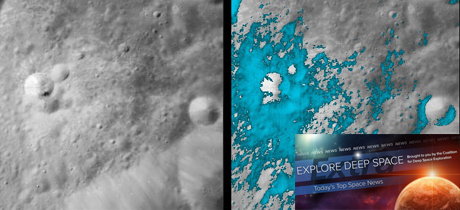In Today’s Deep Space Extra… The NASA/SpaceX Demo-2 mission underway aboard the International Space Station (ISS) following a weekend liftoff opens the door to more science aboard the ISS. Processing work on the James Webb Space Telescope (JWST), currently scheduled for launch in March of 2021, has been slowed by COVID-19.
Human Space Exploration
NASA researcher provides overview of science on the ISS
Spaceflightinsider.com (5/29): Check in for an update on the broad array of science investigations underway aboard the International Space Station (ISS), as provided by Brandon Redell, of NASA’s Space Station integration office. They range from health care to Earth observations and astrophysics. The ISS is humanity’s only outpost in space for science, human exploration development, commercial activity, and international collaboration.
Space Science
$10 billion space telescope may be delayed by COVID-19, says NASA
Coalition Member in the News – Northrop Grumman
Forbes.com (6/2): Work to prepare the James Webb Space Telescope (JWST) for a planned March 2021 launch could be slowed by delays in pre-launch processing caused by work place precautions tied to the coronavirus pandemic, the deputy project scientist for the observatory briefed the American Astronomical Society (AAS) on Tuesday. The complex space telescope is undergoing testing at Northrop Grumman facilities in Redondo Beach, California, for shipment to French Guiana for launch by the European Space Agency (ESA).
Want to mine ice on the Moon? Scientists create a map for where to start
Universe Today (6/2): The University of Central Florida’s (UCF) Ice Favorability Index is offering a new geological model of the Moon and where the evidence from a legacy of lunar missions points to large reservoirs of lunar ice. The frozen water noted primarily at the lunar poles could provide a resource for human life support and liquid hydrogen and oxygen rocket propellants to help support a sustained human presence.
Intense flash from Milky Way’s black hole illuminated gas far outside of our galaxy
NASA (6/2): Thanks to the Hubble Space Telescope, scientists are studying the remnants of an intense burst from the super massive black hole parked at the center of the Milky Way galaxy. The eruption, dated at 3 1/2 billion years ago, was likely witnessed by an early civilization. The glow likely persisted for a million years. The findings were published in the Astrophysical Journal.
JPL mission breaks record for smallest satellite to detect an exoplanet
Parabolicarc.com (6/2): Asteria, a small satellite deployed from the International Space Station (ISS) in late 2017, has exceeded expectations for a technology demonstration by detecting a known extra solar planet designated ‘55 Cancri e’. ASTERIA performed so well after its deployment from the ISS that its primary mission was extended three times. Details of the initiative are soon to be published in the Astronomical Journal.
Op Ed
SpaceX’s astronaut launch is a boost for the International Space Station (ISS)
Nature.com (6/3): In an editorial, the science publication finds the NASA/SpaceX Demo-2 test mission to the International Space Station (ISS) a boost for space science, innovation and global cooperation. “Amid the jubilation, this aspect of the achievement should be highlighted more,” according to Nature.
Other News
Arnie Aldrich (1936-2020)
Spacepolicyonline.com (6/1): Arnie Aldrich, whose 35 year tenure with NASA included positions of responsibility from Mercury through the space shuttle and early International Space Station (ISS) died on May 28 in a Reston, Virginia, hospital following a short battle with cancer. The Vienna, Virginia, resident and native of Arlington, Massachusetts was 83. He joined NASA in 1959 to participate in Mercury, Gemini and Apollo operations. He was Skylab’s deputy program manager and shuttle program director. Aldrich retired from NASA in 1994 and joined Lockheed Missiles and Space Co. as a vice president until 2007.
Astronauts ring opening bell for Nasdaq from Space Station
Associated Press via New York Times (6/2): NASA’s International Space Station (ISS) commander, Chris Cassidy, and the Demo-2 test pilot crew of Doug Hurley and Bob Behnken joined Tuesday to ring the opening bell for the NASDAQ stock market and offer evidence for a global space economy with a bright future.

